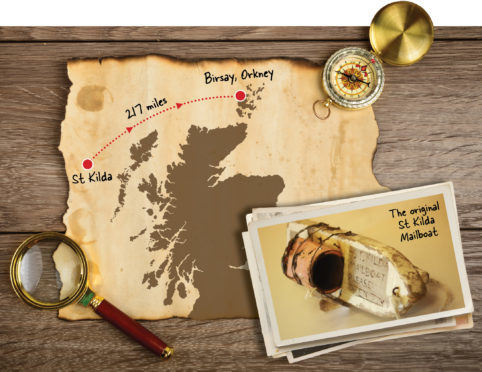When things went wrong on this remote island, it was the method of communication with the outside world.
And now, a St Kilda mailboat has travelled more than 200 miles from the Outer Hebrides to Orkney after being found by a man who incredibly had previously been a visitor to the far flung westerly archipelago.
The St Kilda mailboat was a replica of the small wooden boat sent out as a distress signal in 1876, when St Kildans suffering from famine sent a letter, sealed in a cocoa tin using a sheep’s bladder as a float.
St Kilda enthusiast Alasdair MacEachan, who organises a group visit to the islands each season, set the mailboat out to sea on August 10.
Now it has been discovered in Birsay, Orkney, making a respectable average speed of 10 miles per day.
Angus Campbell, owner of Kilda Cruises, said: “The doughty wee mailboat – a buoy marker from Maine on the east coast of the USA attached to a sturdy plastic pot – proved to be a good example of functional design and the postcards held inside were duly posted as requested by the finder, Martin Gray.
“Interestingly, Martin had been a regular visitor to St Kilda in the past on small cruise ships so he knew the significance of what he had found. He is a really dedicated beachcomber so the find was a lucky one all round.”
In 1876, during a period of food shortage, the first St Kilda mailboat was sent out as a distress signal. A letter was sealed in a container with a sheep’s bladder acting as a float. Subsequently, many of these mailboats were consigned to the sea, and most reached shore in Scotland or Scandinavia carried by the prevailing currents.
In 1912 there were acute food shortages and in 1913 an outbreak of influenza. The war of 1914-18 brought a naval detachment to Hirta and regular deliveries of mail and food from naval supply vessels. When these services were withdrawn at end of war feelings of isolation increased.
There was more emigration of able-bodied young islanders and a breakdown of the island economy. In 1930 the remaining 36 islanders requested evacuation to the mainland.
Today the islands, a double Unesco world heritage site, are home to one million seabirds, seasonal conservationists and a dozen defence workers who man a missile tracking station.










